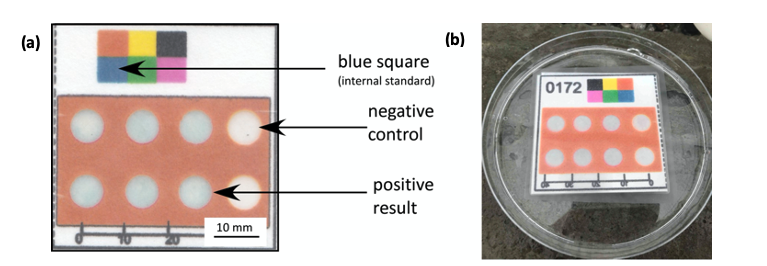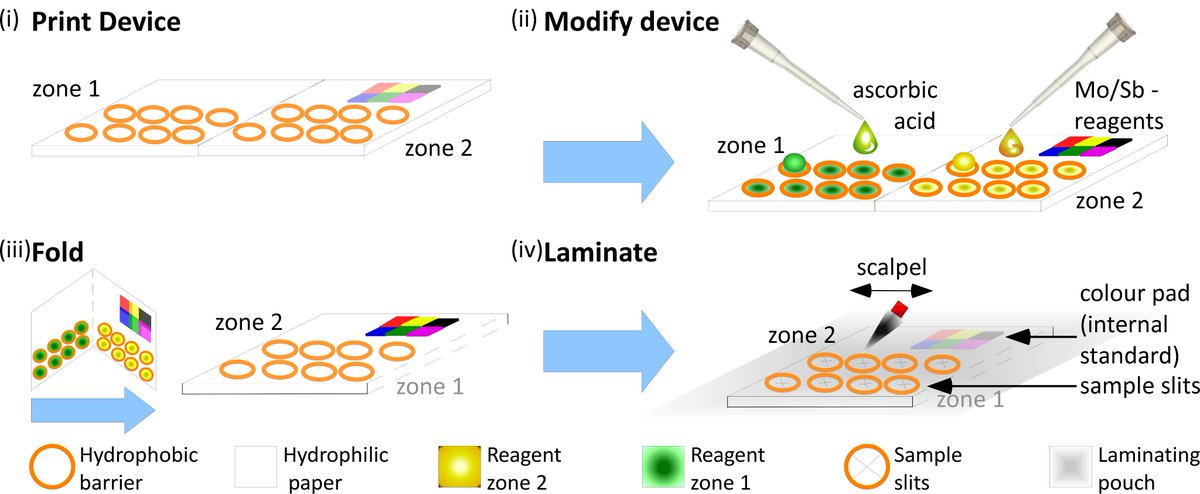
New @ChemRxiv pre-print hot off the press...
Citizen-led sampling to monitor phosphate levels in canals and rivers using a simple paper microfluidic device 1/n
chemrxiv.org/articles/prepr…
Citizen-led sampling to monitor phosphate levels in canals and rivers using a simple paper microfluidic device 1/n
chemrxiv.org/articles/prepr…

We (& that's the academic 'we' which means it was mostly done by PhD student @__SamRichardson) developed a paper-based analysis device & a 3 minute sampling workflow that requires just a container, a test device and a smartphone app. 2/n
Reaction zones are wax printed onto filter paper. This produces a 2D barrier to contain the reactants (think of them as 2D 'flask' printed onto paper). In the presence of phosphates the zones turn blue via formation of a phosphomolybdenum blue complex. 3/n 

More specifically ... Ascorbic acid solution is added to one zone, Mo/Sb reagent is added to another zone. After drying, the paper is folded to align the sample zones. Devices are lamination & slits cut into the device to allow for water to enter 4/n 

Cola is a nice strong phosphoric acid solution so we (that's @__SamRichardson again) sometimes use it (at festivals & in schools) to demonstrate how the devices work. 5/n
https://twitter.com/__SamRichardson/status/1222264093245083649?s=20
And they also work just as well out in the field, along with our Riverdip app (made by the nice people @natapp_uk ), which allows folk to record the time and location of their measurements. 6/n 

Once we get the results back we (@__SamRichardson) do some image analysis to figure our how blue the circles are, and hence how much phosphate was in the water. The results get posted to our project website for all to see. 7/n riverdip.com/map
A great big thank you to all our volunteers who put hundreds of dots on the map, and particularly to @CRTYorkshireNE, @YWTPottericCarr, @VMMeu and of course our funders @NorthSeaRegion 8/n
This is just one part of the @SulliedSediment project, find out more here northsearegion.eu/sullied-sedime…
One particularly cool part of the @SulliedSediment project (lead by @anboa4) aims to use pollen to clean water phys.org/news/2019-08-p…
@ThreadReaderApp would you be so good as to unroll please
• • •
Missing some Tweet in this thread? You can try to
force a refresh



